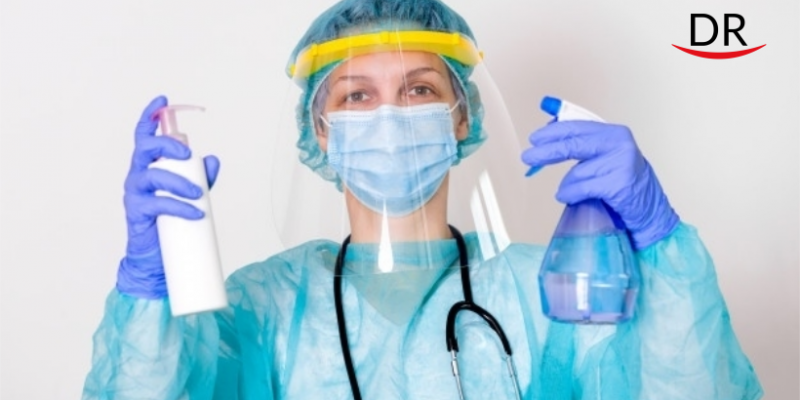Proper disinfection of face shields such that optical clarity is maintained is one of the most sought questions nowadays.
As most of the dentists are using re-usable face shields, it is very important to know proper steps of effective cleaning of personal protective equipments.
Face shields are personal protective equipment devices that are used for protection of the facial area and associated mucous membranes (eyes, nose, mouth) from splashes, sprays, and spatter of body fluids.
WHAT ARE FACE SHIELDS MADE OF?
They are manufactured from any of several types of materials that include:
- Polycarbonate,
- Propionate,
- Acetate,
- Polyvinyl chloride, and
- Polyethylene terephthalate glycol (PETG)
PREPARE YOURSELF BEFORE YOU START CLEANING:
Before you start cleaning the shield, it is important to protect yourself. Use gloves, a facemask and if possible another face shield.
For safety reasons, consider the shield you are about to clean contaminated at every possible surface and take appropriate measures!
THE BASIC CLEANING PROTOCOL:
- Submerge the face shield in warm water to dislodge any particulate matter.
- Add liquid soap (Mild) and allow the soapy water to evenly disperse across the surface.
- Rinse the shield in clear water.
- Dry it with a soft cotton towel or a microfiber.
NOTE: To ensure proper cleaning of shield, it is recommended to disassemble it first.
METHODS OF DISINFECTION:

*Tested on the WHO Handrub formulation 2
**Higher Ethanol concentration significantly decreases its effectivity
Not recommended methods!
The methods listed below were tested and evaluated as not ideal for the disinfection process or causing structural damage to the shield.

AVOIDING DAMAGE AS MUCH AS POSSIBLE:
- Avoid using household cleaners that contain ammonia or other harsh chemicals as they may result in a permanent cloudy surface.
- Avoid using paper towels to dry as it may cause microscopic scratches.
- Before you apply any disinfection solution onto the visor, try it first near the edge! Wait for a while. Inspect whether the solution caused damage to the surface.
It is of utmost importance to take proper care of your protective equipments at this stage as the increasing demand will lead to acute shortage and working without protection?? Not a good idea!




















Comments